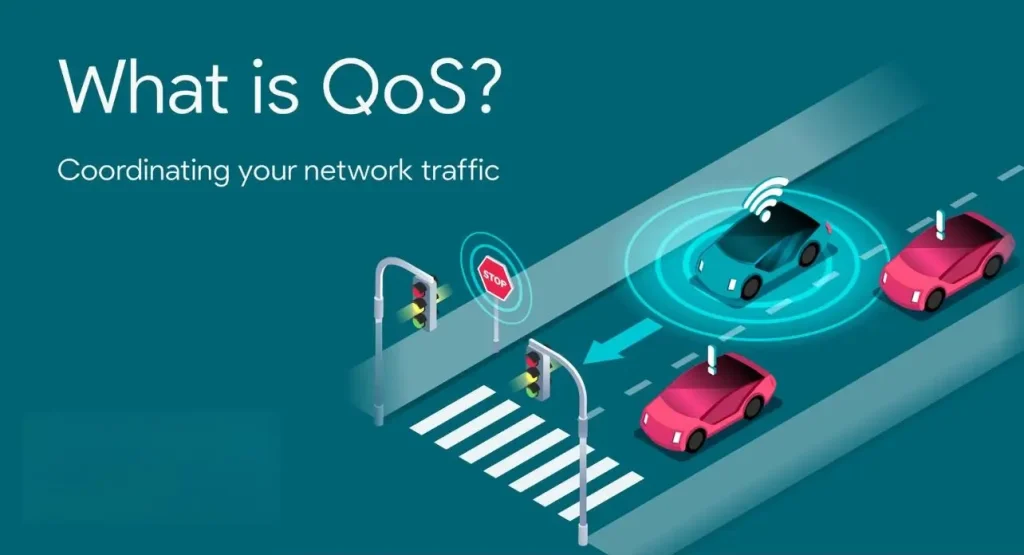Improving QoS in IPTV Networks : Boost Your IPTV Performance with 10 Proven Strategies
Improving Qos in IPTV Networks
As the demand for IPTV services continues to rise, improving Quality of Service (QoS) in IPTV networks becomes essential to ensure smooth and uninterrupted content delivery. This article explores the concept of QoS in IPTV networks, its significance, the challenges involved, and the latest solutions and technologies employed to enhance service quality.

Table of Contents
What is Quality of Service (QoS) in IPTV Networks?
Quality of Service (QoS) refers to a set of technologies and procedures used to manage and improve network performance, ensuring that specific services meet predefined quality standards. In the context of IPTV networks, QoS aims to guarantee smooth content streaming with low latency, free from interruptions or distortions.
Importance of Improving QoS in IPTV Networks
1. Excellent User Experience: QoS ensures a seamless and interruption-free viewing experience, enhancing user satisfaction and loyalty.
2. Efficient Resource Management: QoS helps in effectively distributing bandwidth among various applications and services.
3. Performance Enhancement: QoS ensures that the delivered content meets quality standards, such as high resolution and clear audio.
Challenges in Improving QoS for IPTV Networks
Despite its importance, IPTV networks face several challenges that hinder the achievement of optimal service quality:
1. Increased Traffic: The growing number of users and the demand for high-quality content increase network load, potentially causing performance slowdowns.
2. Network Interference: Congestion or interference within the network can negatively impact streaming quality.
3. Diverse Devices and Equipment: The variety of devices and equipment used can lead to inconsistencies in service quality.
4. Security and Protection: Maintaining network security and protecting content from breaches and piracy adds an additional layer of complexity.
Technologies and Solutions for Improving QoS in IPTV Networks
To overcome these challenges, IPTV system rely on a range of advanced technologies and solutions to enhance QoS:
1. Traffic Shaping
Traffic shaping regulates data flow within the network, ensuring equitable bandwidth distribution among users and applications. For example, prioritizing television streaming traffic over other services like web browsing or file downloads ensures stable IPTV streaming quality even during network congestion.
2. Advanced QoS Protocols
Protocols such as Differentiated Services (DiffServ) and Multiprotocol Label Switching (MPLS) are employed to prioritize data packets, ensuring timely and high-quality delivery. These protocols assign different priority levels to various types of traffic, enhancing overall network performance.
3. Content Delivery Networks (CDNs)
CDNs improve QoS by caching content across multiple geographically distributed servers, reducing latency and ensuring faster content delivery. Companies like Akamai and Cloudflare provide advanced CDN services that enhance streaming speeds and reliability.
4. Network Management Optimization
Network management tools continuously monitor network performance, swiftly identifying and resolving issues. Technologies like Simple Network Management Protocol (SNMP) are used to oversee devices and manage performance effectively.
5. Data Encryption and Compression
Encryption and compression technologies reduce the size of data transmitted over the network, enhancing streaming speed and reducing latency. For instance, video compression protocols like H.264 and H.265 efficiently compress video content without compromising quality.
Practical Examples and Illustrations for Improving QoS in IPTV Networks
Example 1: Prioritizing Data Traffic
In an IPTV network, higher priority can be assigned to data packets related to television streaming compared to other data packets such as internet browsing or chat applications. This prioritization ensures that IPTV streaming remains stable and high-quality even during peak network usage.
Example 2: Utilizing CDNs to Enhance Streaming Speed
An IPTV provider can deploy a CDN distributed across various geographic locations to store content closer to end-users. When a user requests to watch a video, the content is delivered from the nearest data center, reducing load times and improving streaming quality.
Latest Trends in Enhancing QoS for IPTV Networks
1. Software-Defined Networking (SDN)
SDN enables more flexible and efficient network management, allowing dynamic resource allocation and QoS improvements based on real-time user needs. This flexibility enhances the ability to respond to varying network conditions swiftly.
2. Artificial Intelligence and Machine Learning
AI and machine learning technologies analyze large volumes of data to optimize network management intelligently. They help predict potential issues and address them proactively, maintaining high service quality.
3. Fifth Generation (5G) Networks
5G networks offer higher speeds and lower latency, significantly enhancing QoS for IPTV services. The increased bandwidth and reduced response times support high-definition content delivery, including 4K and 8K resolutions, without interruptions.
Practical Solutions to Improve QoS in IPTV Networks
1. Upgrading Infrastructure: Investing in modern networking equipment that supports advanced QoS technologies can significantly enhance network performance.
2. Effective Bandwidth Planning: Accurately assessing bandwidth requirements and allocating it appropriately among different services and applications ensures optimal performance.
3. Continuous Performance Monitoring: Regularly using network monitoring tools to maintain service quality and promptly address any emerging issues.
4. Training the Workforce: Ensuring that network management teams are well-versed in the latest QoS technologies and their effective implementation.
Conclusion
Improving Quality of Service (QoS) in IPTV networks is crucial for delivering an outstanding and satisfying viewing experience to users. By adopting advanced technologies such as traffic shaping, sophisticated QoS protocols, Content Delivery Networks, and Software-Defined Networking, IPTV providers can overcome challenges and achieve high levels of service quality and performance. Investing in QoS improvements is not only key to the success of current IPTV services but also forms the foundation for a promising future marked by innovation and growth in the digital broadcasting landscape.
References
• Quality of Service (QoS) Overview
• Multiprotocol Label Switching (MPLS)
• Simple Network Management Protocol (SNMP)
• Software-Defined Networking (SDN)
Content Delivery Network (CDN) Solutions
Cloudflare: What is a CDN?
Qualcomm on 5G: https://www.qualcomm.com/invention/5g
FourCC on Video Codecs:
